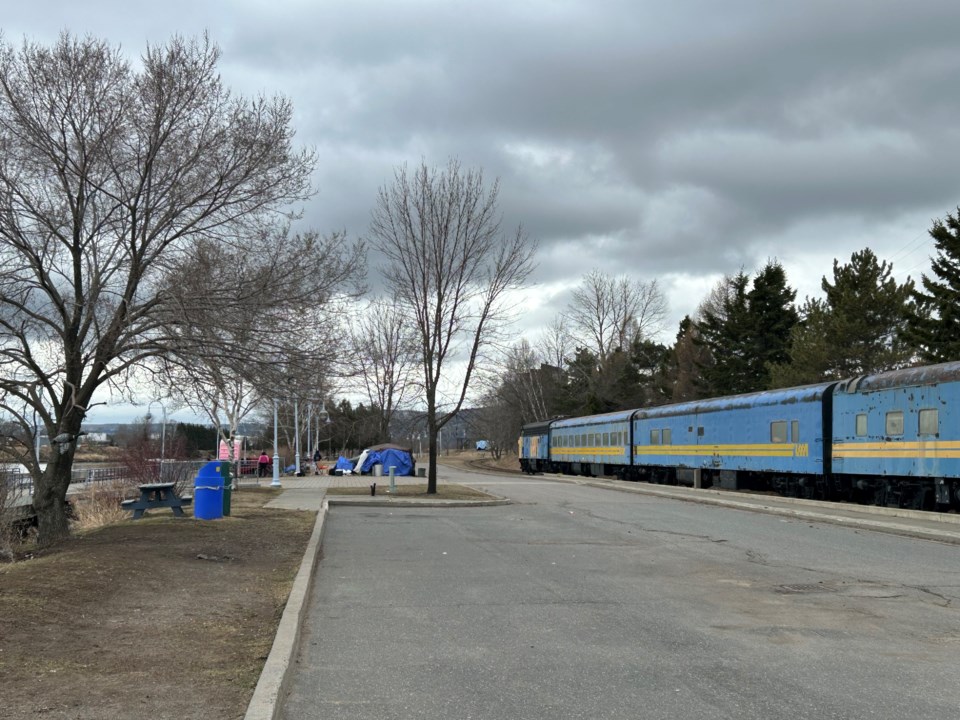THUNDER BAY — Kam River Heritage Park will be the site of the city's shelter village.
Council ratified the decision in an 8-5 vote Monday night, closing the book on the contentious issue.
The ratification puts an end to more than six months of reversed decisions and back-and-forth between council administration on possible locations.
The delays mean the facility should be up and running in the fall, not this summer as originally planned.
"It's going to be a difficult summer," said city manager John Collin, as the city works to manage homeless encampments without the shelter village in place.
The Kam River site was approved in principle a week prior, after a marathon debate that ran late into the evening.
Councillors had another lengthy debate about the site for this week, centred on an email from Canadian Pacific Kansas City Railway (CPKC) outlining the company's safety concerns.
Couns. Rajni Agarwal and Mark Bentz, who opposed the Kam River site, both referred to an apparent CPKC safety guideline stating nothing can be built within 300 metres of a freight rail yard.
Bentz said council was told the shelter village would be 100 metres from the rail yard, he did not state whether that information was told to him by city staff or CPKC.
City staff had noted the objection from CPKC in their recommendation to council last week.
CPKC reviewed the Kam River Heritage Park site, according to the report, but when staff attempted to address the rail company’s concerns, “CPKC was unable to provide specific safety and security recommendations within the limited timeframe as input would be needed from various internal stakeholders.”
City staff have yet to do a full safety assessment of the village site, said Collin.
He said the city will consult CPKC on all safety concerns expressed in the email, but also said the 300 metres distance guideline “is not legislation” and there are “exceptions.”
“The guideline really does apply to new residential developments. Our professional opinion is that this is not a new residential development. It is an emergency shelter, and there is a difference,” said Colin.
He said the village “is more akin to a commercial property” because the services that will be provided on site.
Collin assured council that if city staff find any concerns during the safety assessment, they will bring a full report to council.
Asked about the perimeter fence around the village, Rilee Willianen, the city's encampment response lead, said the facility will have two monitored access points.
One gate will be closed unless the operator needs to open it. The other will be monitored by a security officer. There will also be a policy limiting visitors to residents' guest lists, said Willianen.
The safety and security provided by the fence will extend "not only to the residents in the village, but also to the community outside of the village,” she said.
“I think it signals to folks that this is a managed environment, and that's really important for folks to know that there's oversight to the site. It also helps the residents feel a sense of comfort that they're in a managed environment, and the controlled access allows for monitoring of who's coming in and who's coming out.”
Coun. Michael Zussino, who also opposed the site, raised another aspect of the city's encampment response plan — the proposal to identify three designated encampment sites — asking when council will be informed of where those sites will be.
As per its ten-part action plan, the city needs an operational shelter option to legally move forward with designated encampment sites.
Because the village will not be in operation until the fall, Collin said it will be a difficult summer for the city, managing encampments as best they can.
“We will come to council, as soon as practical to start the discussions on designated encampments, but I do not believe that we will land on the final locations and be able to put all the pieces of the puzzle together until the temporary village is operational, which is the fall of this year,” said Collin.
Construction of the shelter village is projected to cost $5.5 million, with the province contributing $2.8 million. Another $1.5 million was budgeted for operating costs for the first year.
The shelter village is intended to operate for five years, after which staff say the city's infrastructure investments at the Kam River site will be leveraged in a park revitalization effort.
